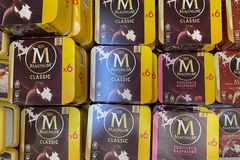
- Industry news
Industry news
- Category news
Category news
- Reports
- Key trends
- Multimedia
- Journal
- Events
- Suppliers
- Home
- Industry news
Industry news
- Category news
Category news
- Reports
- Key trends
- Multimedia
- Events
- Suppliers
MARTINI Asti Features Streamlined, Sustainable Glass Bottles
09 Dec 2014

9 Dec 2014 --- Hamilton, Bermuda. The elegance and sophistication of multi-award winning MARTINI Asti sparkling wine is built on a more than 150 years of great taste and contained in bottles with an iconic shape and sustainable design.
A strategic redesign that began in 2010 has produced a streamlined version of the original MARTINI Asti bottle, shaving off close to two ounces in weight. The aim was threefold: to reduce the glass weight, to keep the same external shape and to guarantee consumer safety. The redesign team worked to honor the 150 year old heritage of the MARTINI brand while incorporating the latest in sustainability design.

“We are talking about a bottle for sparkling wine that involves quite a bit of liquid pressure inside,” explains Simona Filosi, MARTINI Senior Packaging Developer. “When you compare the old and new bottles side by side, you cannot tell any difference in terms of shape. However, by reducing the glass weight, we reduce the energy required to make the bottles.” The annual energy savings from lighter-weight glass for these MARTINI bottles is equivalent to 330 fewer cars off the road in a year.
The redesign is part of a broad scope of sustainability initiatives for MARTINI. At MARTINI facilities worldwide, the commitment to protect the environment and reach a net-zero impact has fostered a reduction in greenhouse gas emissions by nearly 30 percent, solid waste by nearly seven percent and water use by nearly four percent over the past eight years.
MARTINI is part of the Bacardi family of spirits with a deep and abiding commitment to sustainability. Since 2006, when the Company began tracking its global impacts on the environment, Bacardi has reduced both nonrenewable energy use and greenhouse gas emissions from production by nearly 28 percent. Building on current programs and efficiencies that reduce its environmental impacts, the Bacardi Limited global sustainability program sets specific goals in three areas to help the Company reach its vision of a net zero impact:
Responsible Sourcing: Bacardi strives to obtain all raw materials and packaging from sustainably sourced, renewable or recycled materials while maintaining or enhancing the economic status of growers and suppliers. By 2017, the goal is to obtain 40 percent of the sugarcane-derived products used to make BACARDÍ rum from certified, sustainable sources – and 100 percent by 2022. This pledge from Bacardi is an industry first.
Global Packaging: Bacardi commits to use eco-design to craft sustainability into its brand packaging and point-of-sale materials. By 2017, Bacardi plans to reduce the weight of its packaging by 10 percent and achieve 15 percent by 2022.
Operational Efficiencies: Bacardi continues to focus on reducing water use and greenhouse gas emissions with a 2017 goal to cut water use by 55 percent and GHG emissions by 50 percent. In addition, Bacardi aims to eliminate landfill waste at all of its production sites by 2022.
All content and features on this website are copyrighted with all rights reserved. The full details can be found in our privacy statement
Subscribe to our newsletters
By continuing to browse our site you agree to our Privacy Statement










